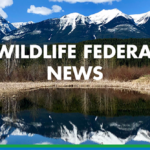Column: From the Hill -- Air Travel and our Local Airports
Spring seems to want to take its own sweet time in coming back to the southern Interior, and with that the gray days of winter are gradually being replaced by sun. That comes as good news for us all, including the travelers who rely on regular flights in and out of our local airports. Winter is a time of frustrating cancellations—turning back over Penticton, Castlegar, or Trail to return to Vancouver, where an expensive hotel waits. Or not even getting out of the Interior—and missing an important connection to that winter holiday destination.
Since aviation (and transport in general) is a federal responsibility, I hear a lot about airports in my travels around the South Okanagan and West Kootenay. And the vast majority of the talk is about how unreliable the air service is, especially in winter when low clouds hang in the valleys.
A few weeks ago I met with officials in Castlegar, and last Friday I convened a meeting with Penticton and Regional District officials to discuss this situation. One thing is clear—there is nothing that can be done with added airport navigation equipment that will improve the problem at either airport. To lower the allowed ceiling levels for take-offs and landings, airlines must have aircraft that are able to use Required Navigation Performance (RNP) protocols. The RNP system creates a 3-dimensional path in space that aircraft must use when landing and taking off—linked in to a modern GPS system on the plane, they provide safe and economical approaches.
The avionics needed for RNPs are presently on the Q400 aircraft that WestJet uses on their Penticton service, but are not installed on the Dash 8 planes used by Air Canada. So, the obvious solution for both Penticton and Castlegar is to convince Air Canada to switch out the 30-year-old Dash 8s for the newer, larger Q400 planes.
This might be relatively easy for Penticton. Most flights out of Penticton are full or nearly so, and 60 percent of passengers from the Penticton area report that they regularly use the Kelowna airport because of its better reliability and choice of flights and carriers. That suggests that Penticton could easily provide the larger passenger volumes needed to fill the larger Q400 planes.
The situation is more complicated in Castlegar, where the narrower valley and steeper mountainsides make RNP protocols more difficult to develop. The city of Castlegar has invested in a major study to produce suitable protocols, but to institute it—even if Air Canada starts to use Q400s there—they would need to get the federal government to tweak existing regulations to allow a more constrained RNP protocol. These more constrained protocols are now being used in the United States, and since the Canadian regulations tend to follow the US regulations, these changes may not be difficult to put through, but add an extra wrinkle to the process.
Air Canada is planning to phase out its aging Dash 8 fleet over the next five years. What Penticton and Castlegar need to do is convince the route-planning office of Air Canada that the Q400 would be a good match at their airports. South Okanagan government officials are considering presenting Air Canada with data showing the benefit of bringing the new planes to Penticton. The process at Castlegar may be slower, but air travellers are keen to see changes brought in at both airports.



























Comments